Is there plastic in your teabag?
When I first heard that there was plastic in tea bags, I was shocked. It turns out I wasn’t the only one. The subsequent blog post I wrote about it (back in 2014) is my most popular post to date, having been shared more than 44,000 times. (Yes, 44 thousand. That’s a lot of shocked tea drinkers, right there.)
You can still read the original teabag post here, but IÂ thought it was about time to write an update.
After all, there’s still a lot of misinformation and confusion around which teabags contain plastic, and what the plastic-free options are.
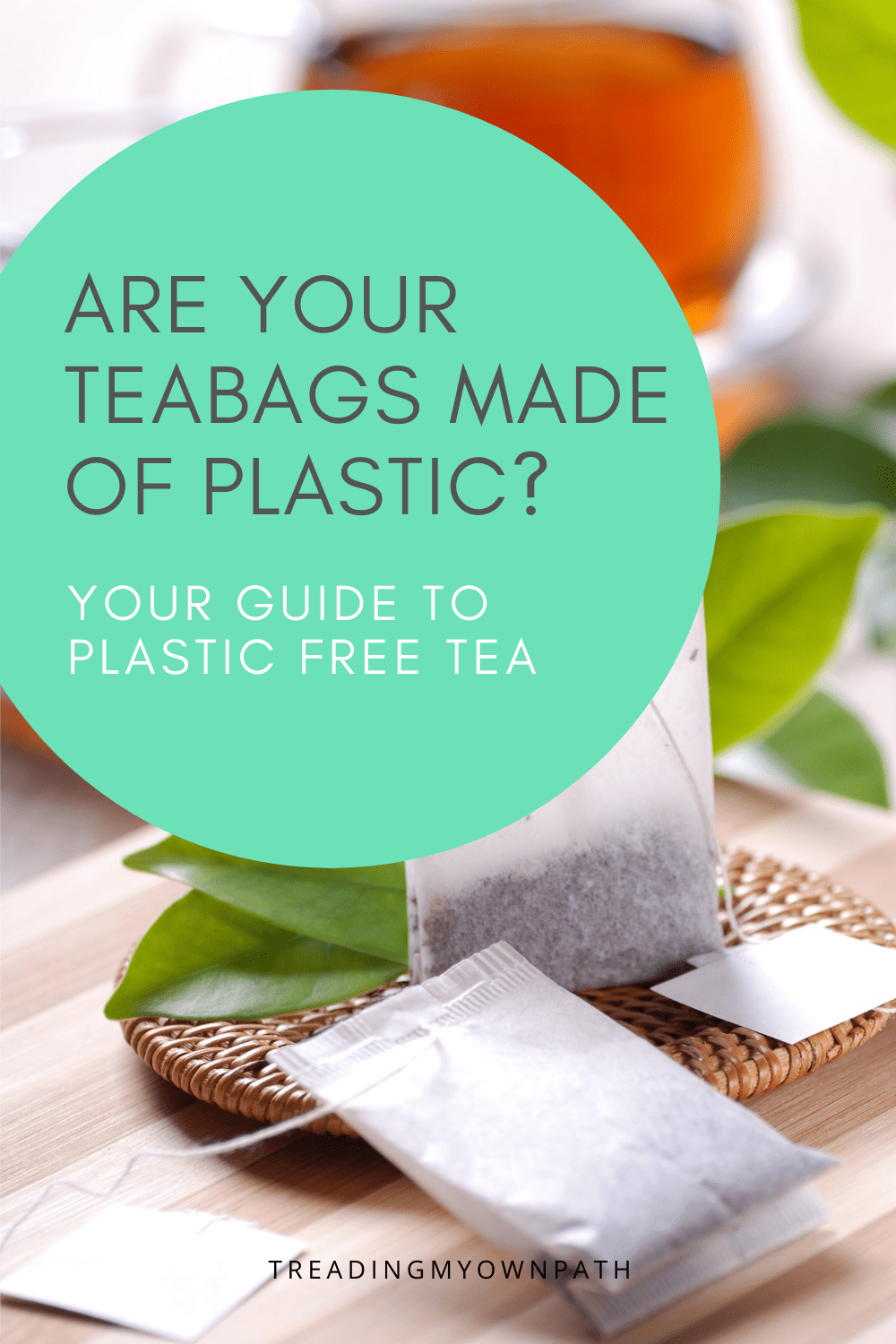
There’s plastic in your teabags
Can it be that every time we made a brew, we are stewing plastic in our cup alongside our tea leaves?
I do so hate to be the bearer of bad news, but yes.
If you’re a teabag-using tea drinker, it is more than likely that there’s plastic in your teabags.
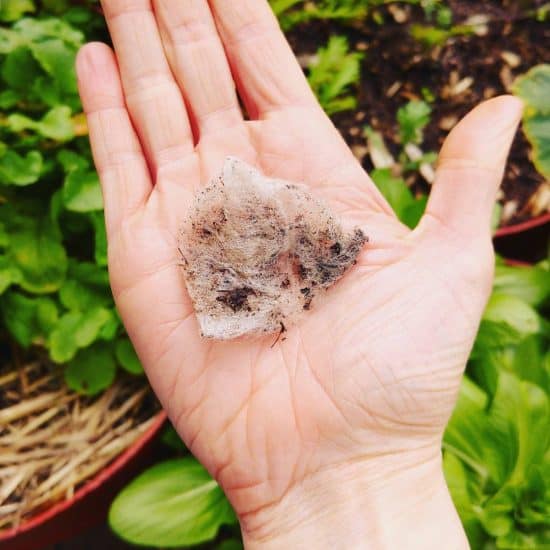
Wait! I hear you say. Not all teabags are equal! True. When it comes to teabags, there are different types. Those different types use different types of plastic, and use it in different ways, but the majority still contain plastic.
There’s the regular pressed paper teabags (the ones with the crimped edges) and yes, these contain plastic. The main reason is that these crimped teabags are pressed shut using heat, and the plastic melts to seal them together. Typically the paper in these teabags contain 20 – 30% plastic.
Then there’s the premium ‘silken’ type, which are always made from plastic (not silk, like the name suggests).
The only teabag type that might be plastic-free is the string-and-tag variety: these can be folded shut and secured with a knot or a staple. But many suppliers of these teabags still choose to use paper with plastic fibres for added strength.
(If the teabag was just paper, and you left it to steep too long, the paper might break down and – imagine the catastrophe – there could be a loose tea leaf floating in your cuppa.)
You’d be forgiven for thinking that organic teabags would be plastic-free, but in fact, the majority of those contain plastic too.
Confusing? This graphic should help simplify things a bit:
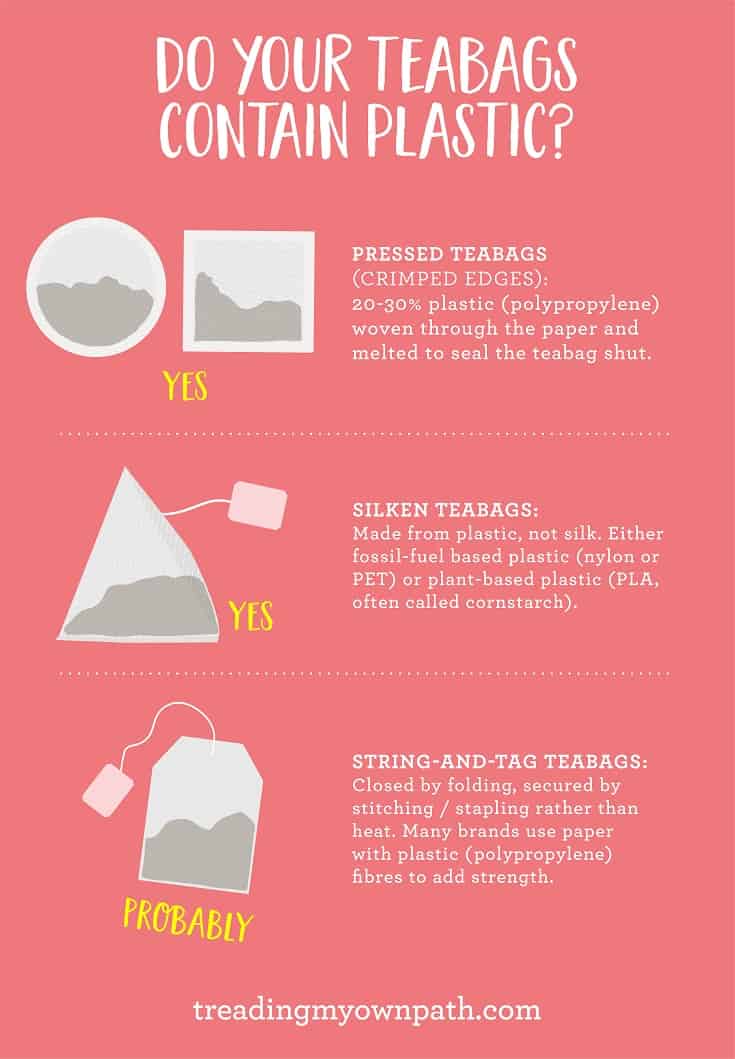
The main types of teabag – and what they’re made of
Pressed (heat-sealed) teabags
These are the standard square, rectangular or occasionally round teabags that have crimped/pressed edges on all sides, and they always contain plastic. The two separate layers of paper need to stick together to keep the lea leaves in, and paper does not stick to paper by itself. Glue would dissolve in your tea – yuck!
Plastic (usually polypropylene, or less commonly a mix of polyethylene and a polyethylene co-polymer) is woven in between the paper fibres, and melts upon heating to seal the teabag shut. Typically these teabags contain 20-30% polypropylene.
In addition, some companies choose to treat their paper teabags with a chemical called epichlorohydrin to help prevent tears. This chemical is deemed a probable human carcinogen. It is also known to react in water to form another chemical, 3-MCPD, another possible human carcinogen.
Silken teabags

Despite the name, silken teabags are made from plastic, not silk. Usually found in a pyramid shape, the fibres of silken teabags are woven to make them look like fabric.
These teabags are either made from fossil-fuel based plastic (usually nylon or PET – the same plastic that drinks bottles are made from: plastic #1), or plant-based plastic (PLA or poly-lactic acid, usually derived from corn or other plant starch: plastic #7).
When a company says their tea bags are made with cornstarch, they mean plant-based plastic.
Silken teabags are often spruiked as an eco-friendly choice, but teabags made from fossil-fuel based nylon or PET will last forever – clearly not eco-friendly at all. Plant-based plastic teabags are labelled “eco-friendly†as plants are a renewable resource.
Plant-based plastic is sometimes labelled biodegradable, or compostable. However, just because a silken teabag is made of plant-based plastic, that does not automatically mean it is biodegradable. It is more complicated than that.
Biodegradable means broken down by microorganisms over time. There is no stipulation for avoiding toxic residue, nor a requirement that the plastic breaks down into constituent parts, just that it is no longer visible.
Compostable means something different: that the product undergoes biological decomposition at a compost site, and breaks down into carbon dioxide, water, inorganic compounds, and biomass, leaving no toxic residue.
A product making either claim should quote the standards used in testing to determine this label. Without this, the claim is meaningless. (You can find out more about certification standards here.)
String-and-tag teabags

The filter paper used to produce teabags with a string and tag attached does not need to contain plastic polymer fibres: these teabags close by folding, and are secured by stitching or stapling, rather than by heat sealing.
However, many teabag producers (including organic brands) still choose to use paper with plastic (polypropylene) fibres to add strength to their teabags.
And beware – a few companies crimp their teabags into this shape and attach the string. The crimping is the tell-tale sign that this bag contains plastic. The string is usually stuck on, rather than sewn in.
The string is usually made from cotton. If you do find a plastic-free variety, these teabags are completely compostable.
Teabags made entirely of paper will rip more easily, and will disintegrate if left to stew in a cuppa. If your teabag seems remarkably resilient, the likelihood is that it contains some plastic fibres.
(If you want to see how teabags are made, this short clip from a BBC2 documentary will certainly open your eyes a little!)
Plastic-free tea: What are the solutions?
There are two solutions for truly plastic-free tea.
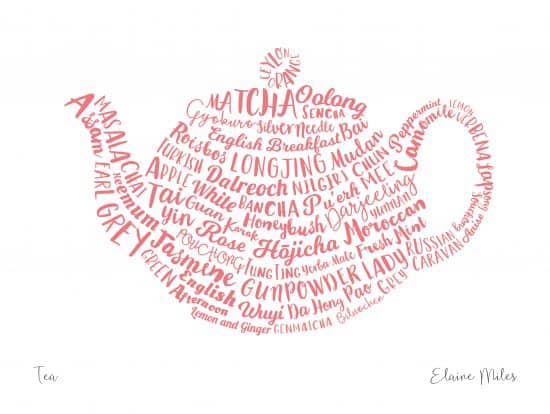
Option one: look for paper teabags that do not use plastic as reinforcement.
These will be the string-and-tag teabags, but check with the manufacturer as many brands still contain plastic.
Brands that have confirmed that they do not use plastic in their string-and-tag teabags include Tea Tonic, Pukka teas (although their envelopes are plastic) and Clipper (string-and-tag only: their pressed teabags contain plastic).
Bioplastic is still plastic (even if it’s labelled as biodegradable or compostable) so if you really want to choose a plastic-free teabag, steer clear of anything labelled bioplastic, plant-based plastic, or cornstarch.
Option two: choose loose leaf tea
My absolute favourite option is to choose loose leaf tea. The lowest waste option is to buy from the bulk store. If that’s not practical, loose leaf tea can be purchased in tins and cardboard boxes that are fully recyclable.
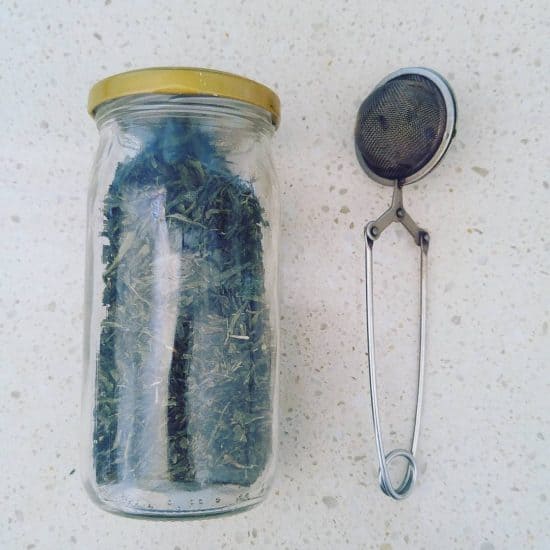
Loose leaf tea is not as expensive as it appears. Loose leaf tea is often priced per kilo, whereas teabags are priced per bag, which makes it hard to compare.
Actually, it only takes a couple of grams of loose leaf tea to make a cuppa.
The other great thing for cheapskates like me (or rather, people who prefer weak tea) is that it’s much easier to brew a second cup reusing loose leaves than it is with a teabag.
If teapot-washing isn’t your thing, tea steepers are a great way to make a single cup without the hassle of extra washing up.
If you aren’t ready to give up the teabags, there are refillable cotton bags out there, too.
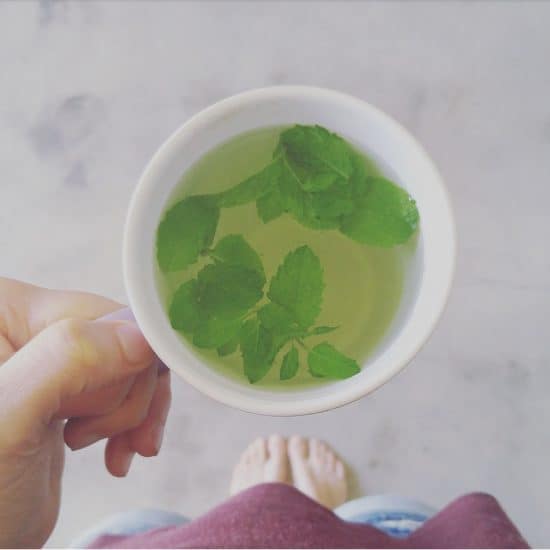
Finally, if you’re a herbal tea drinker, ditch the dried stuff altogether and use fresh leaves. Mint is one of the easiest herbs to grow and there’s nothing like a cup of fresh mint tea.
Now I’d love to hear from you! Did you know that most teabags contain plastic? If you did know, have you made the switch? Have you found a brand of plastic-free tea? Have you given up the teabags and embraced the loose leaf? Have you found a different solution? Please share in the comments below!

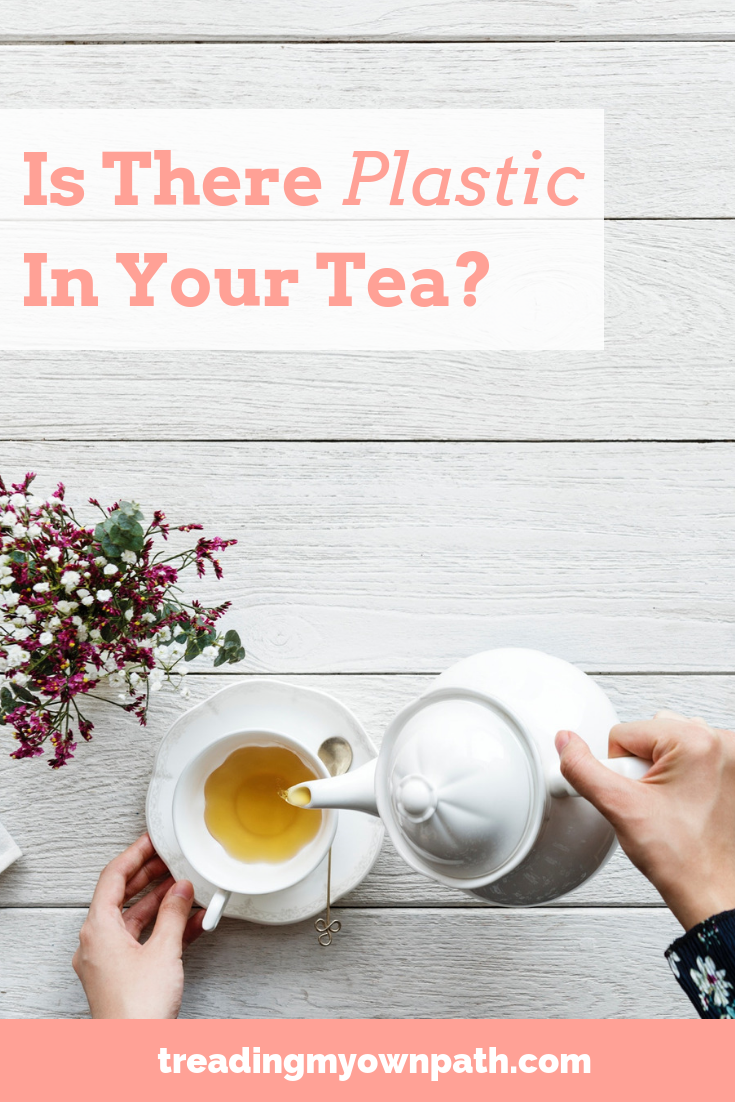
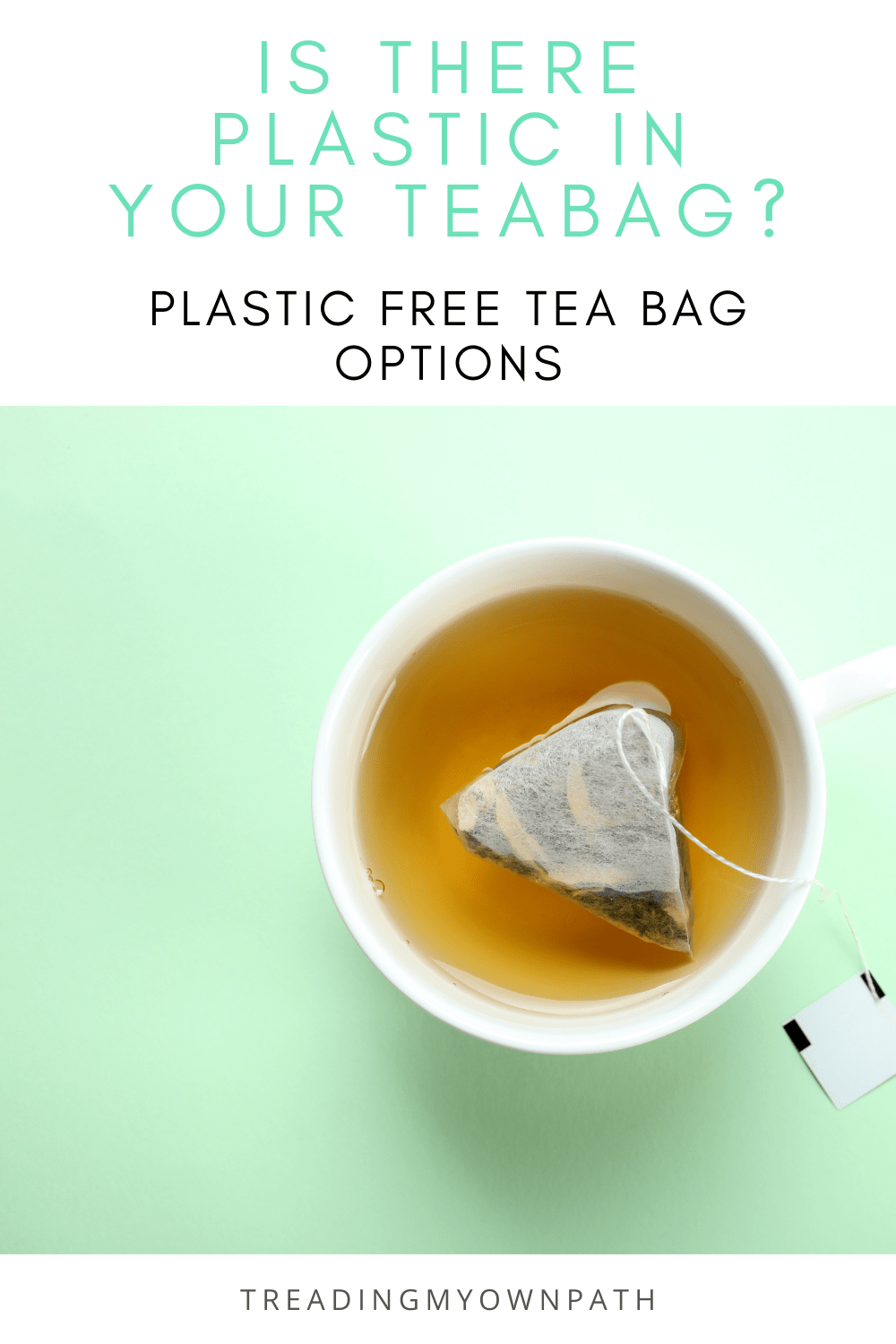
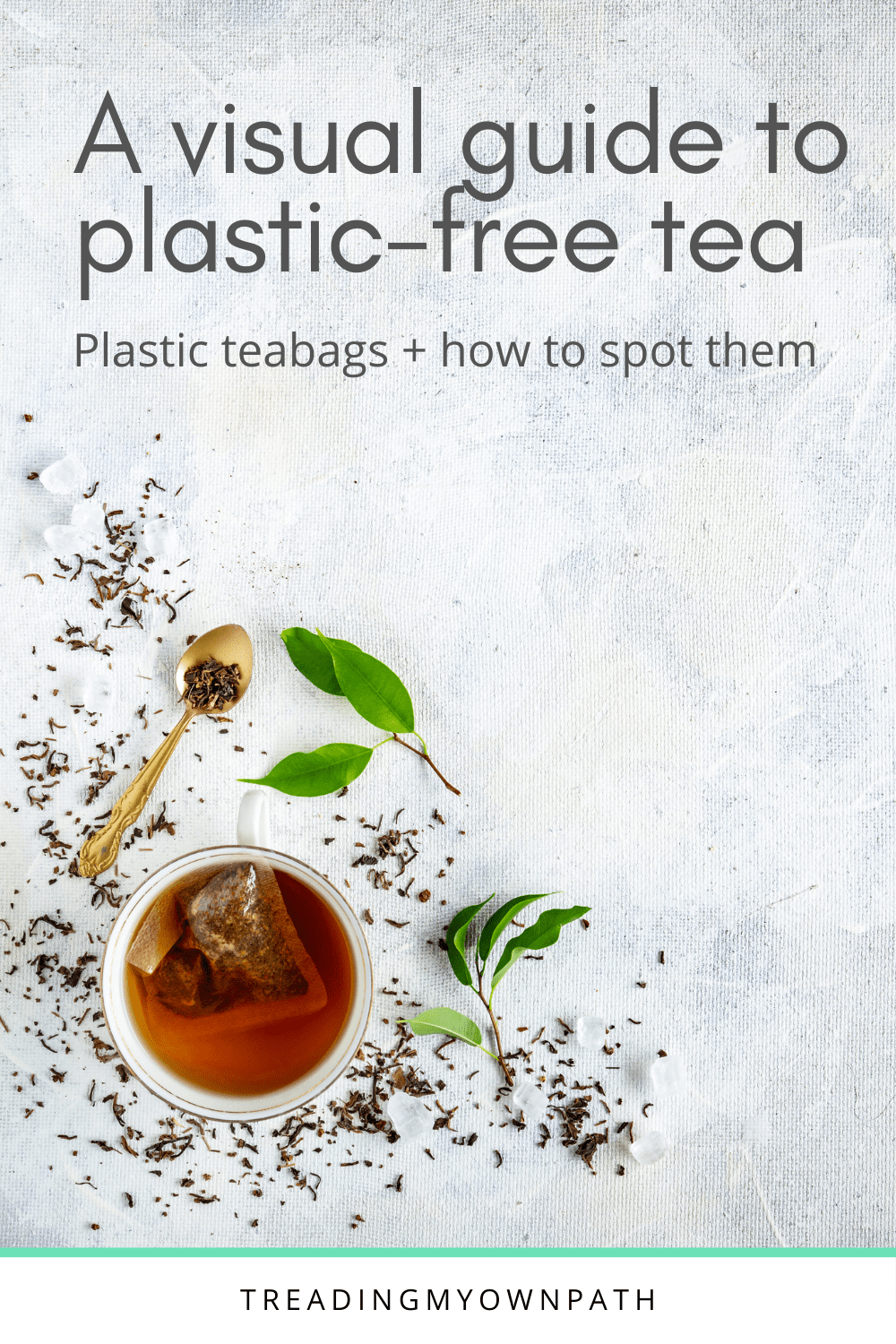
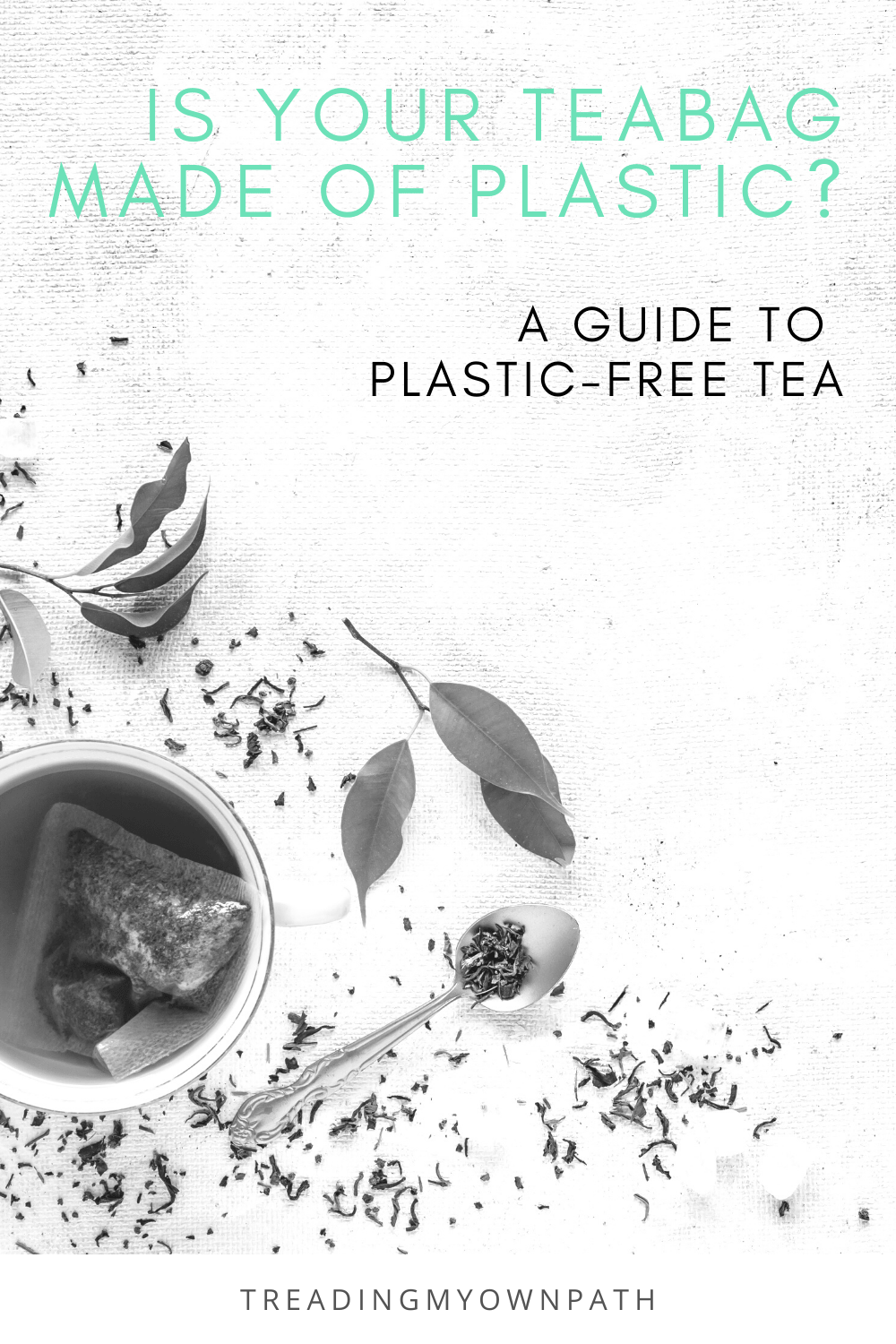
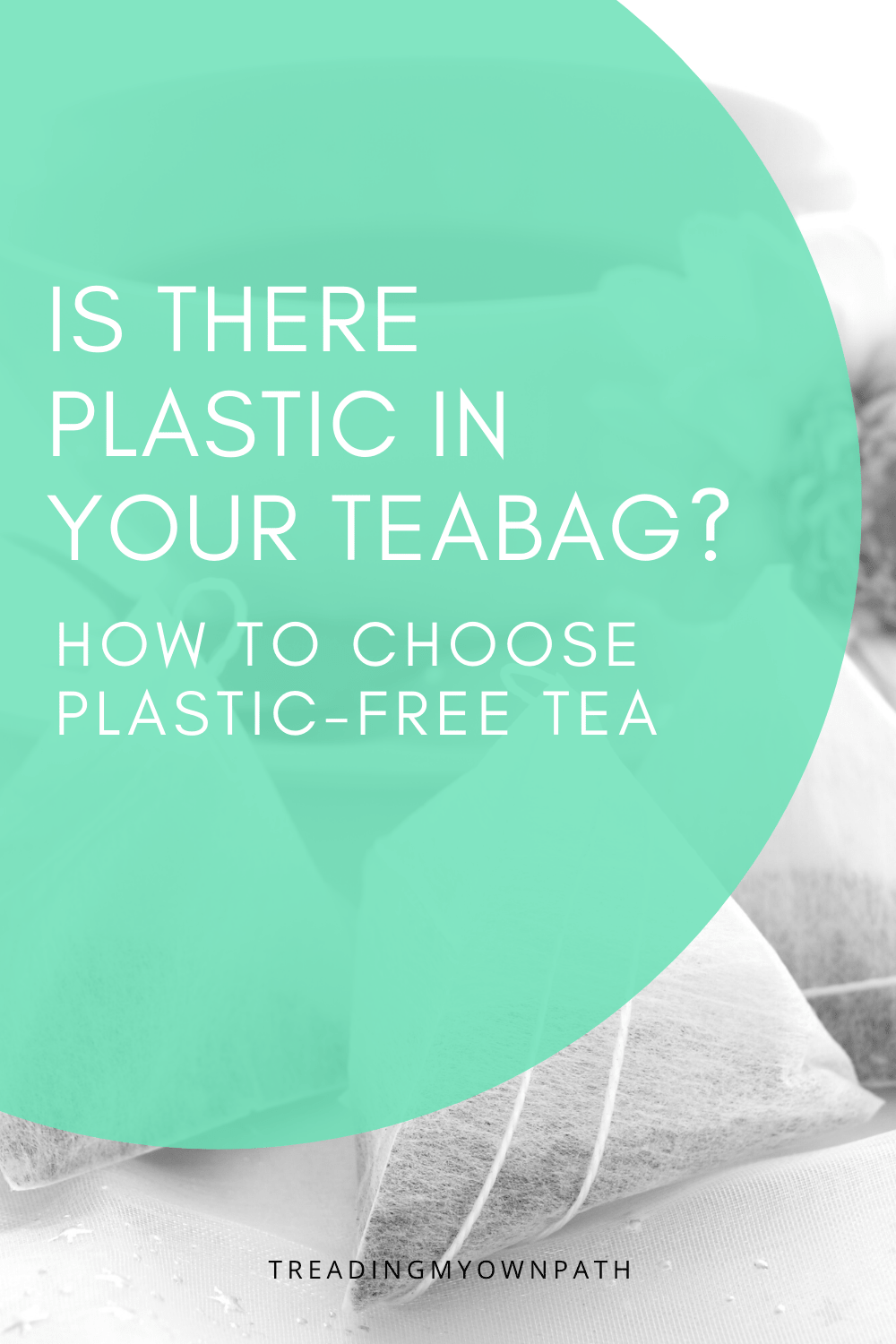
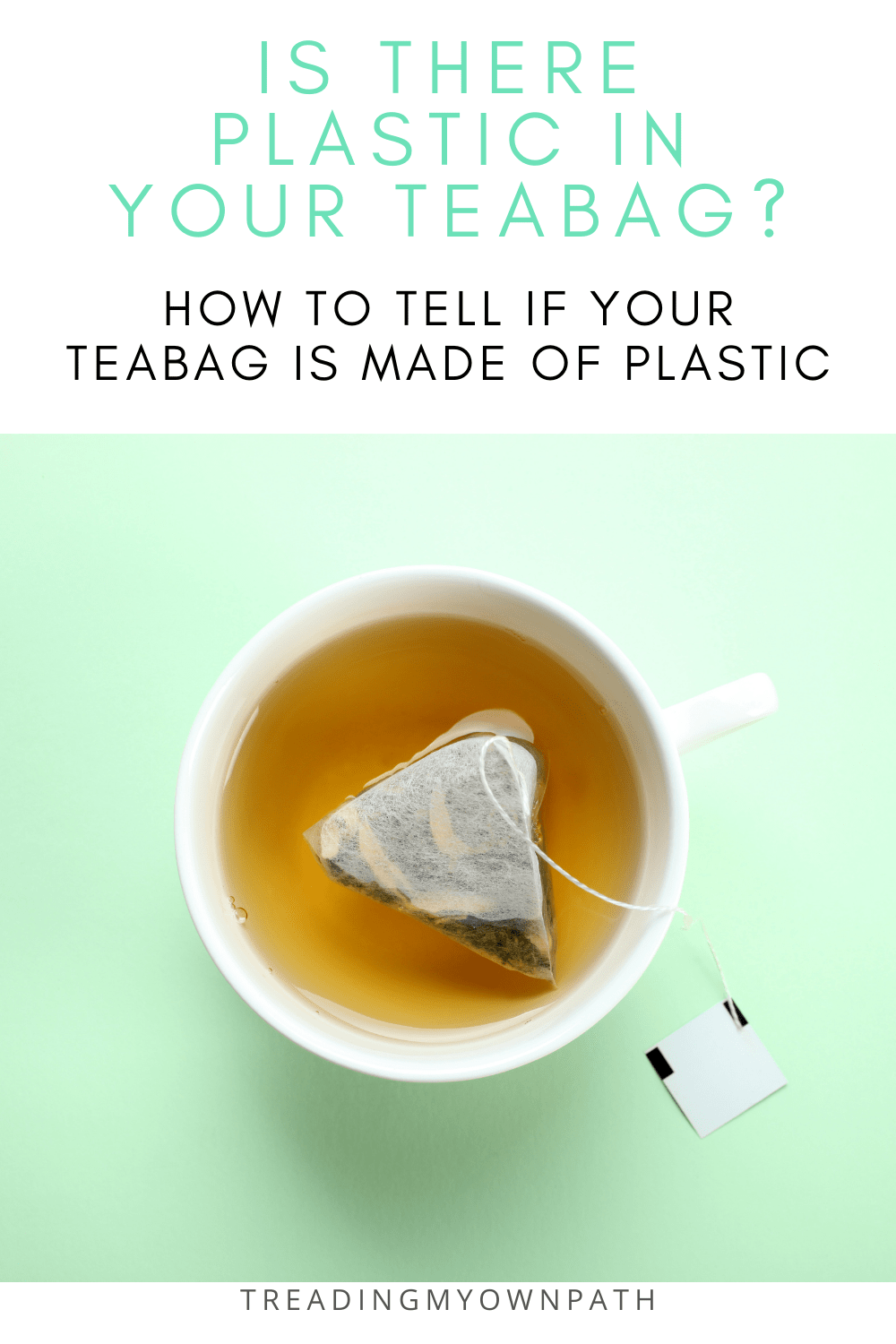
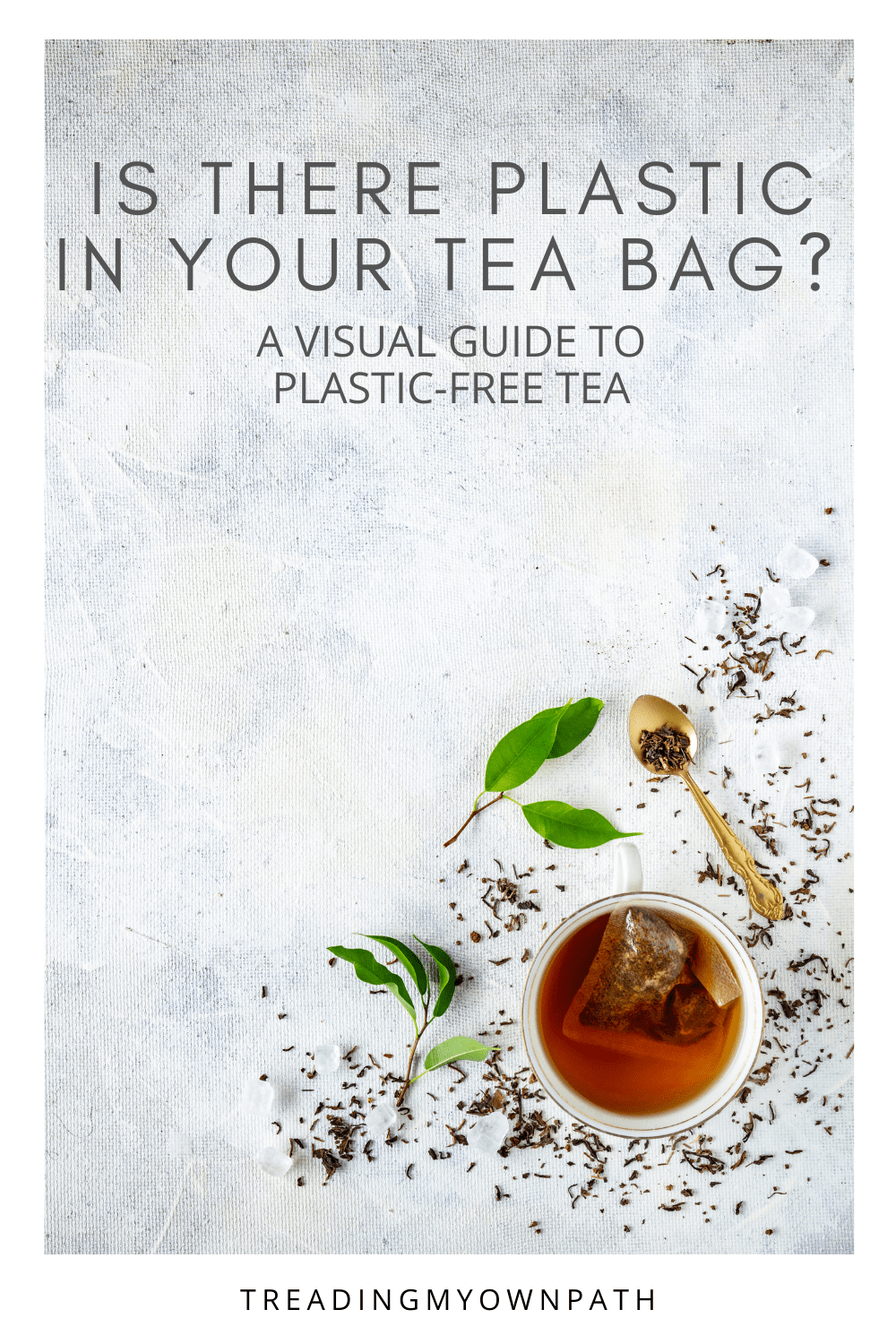

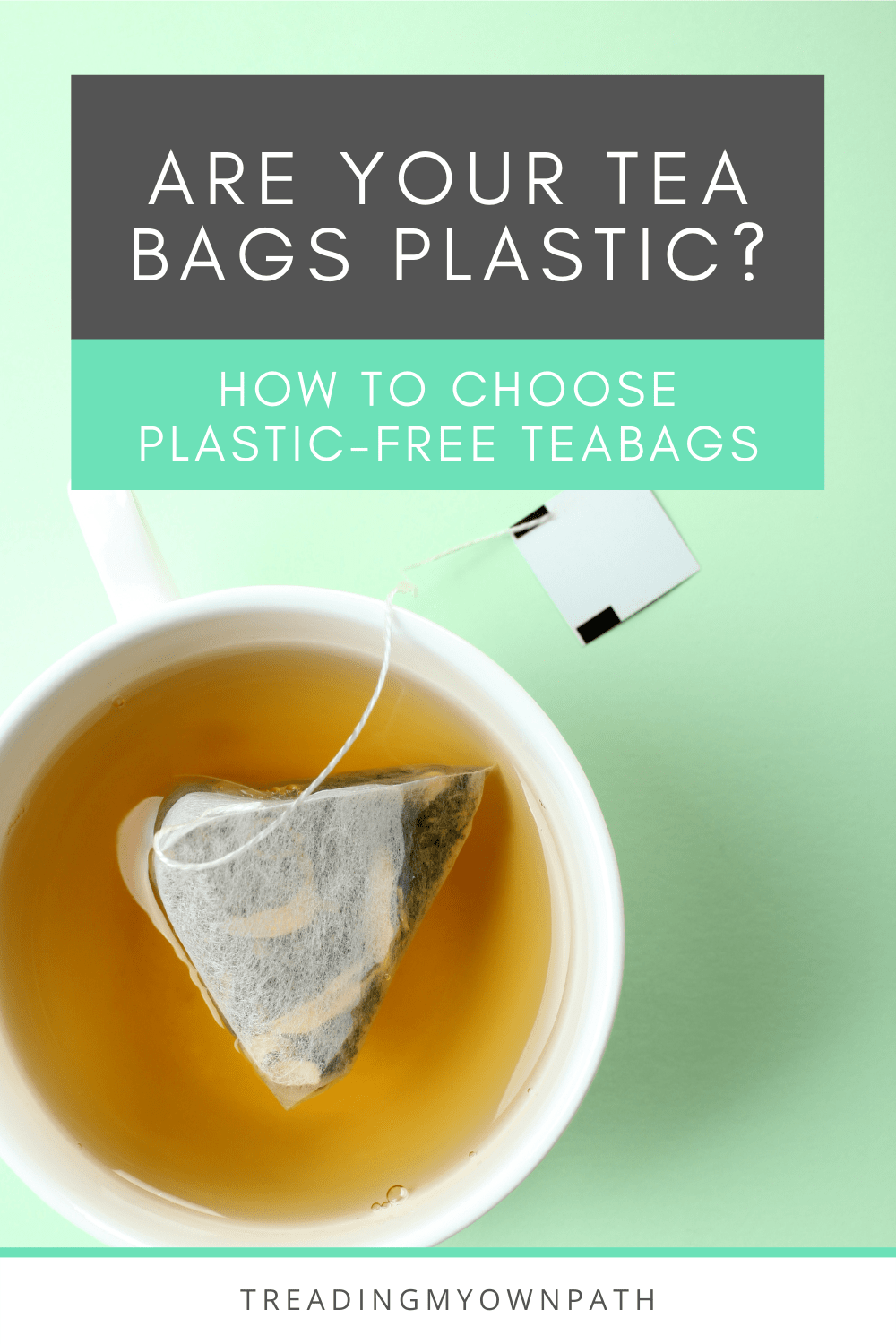
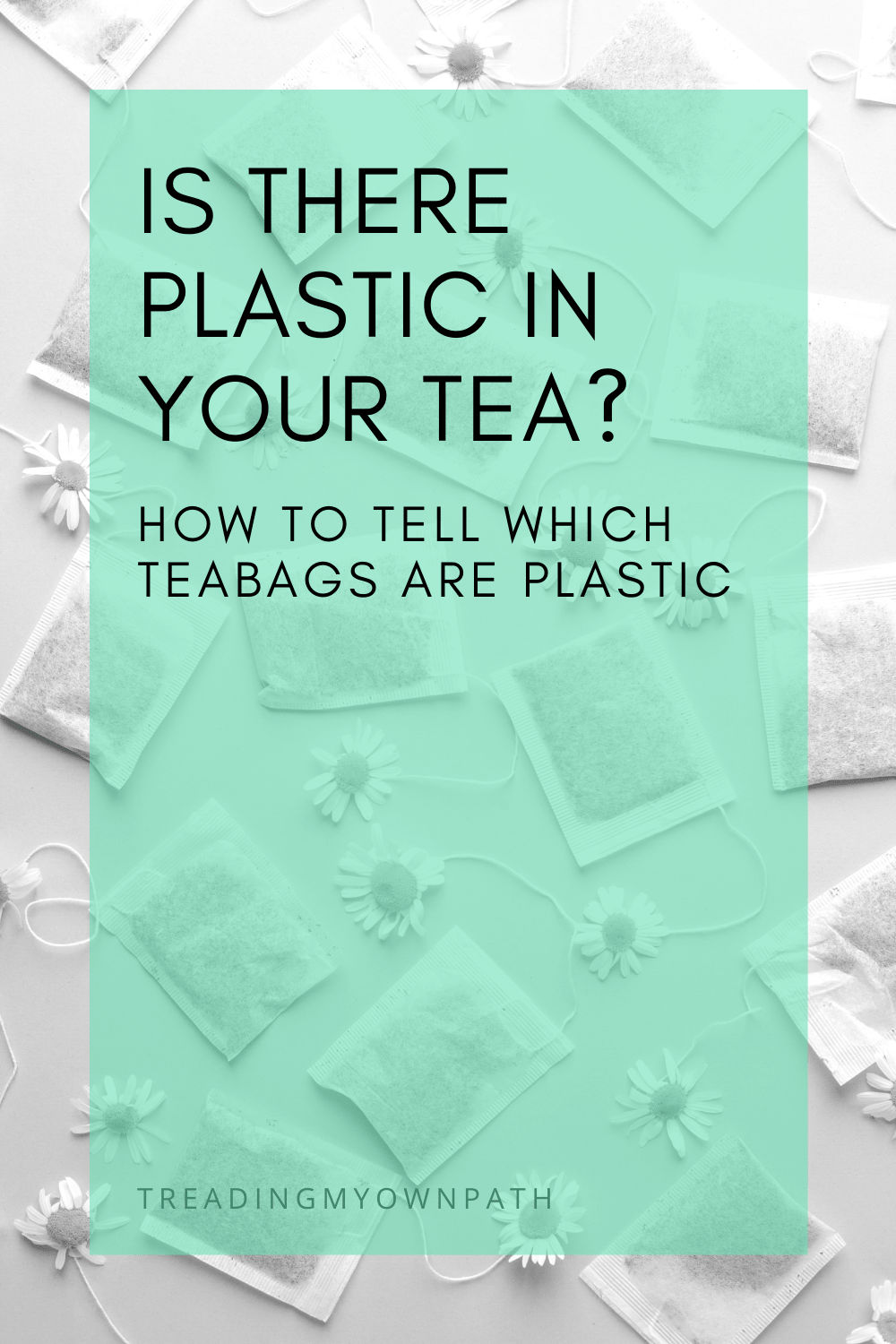

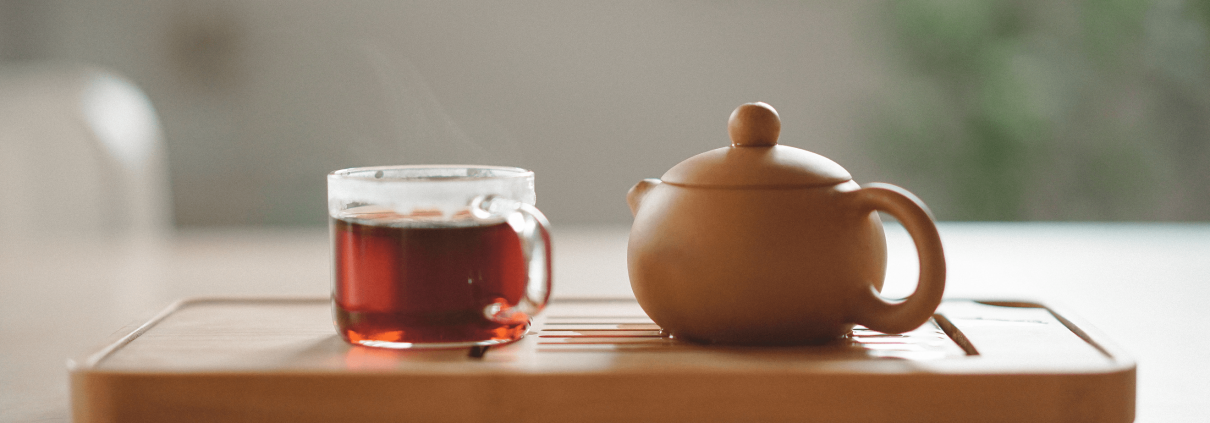
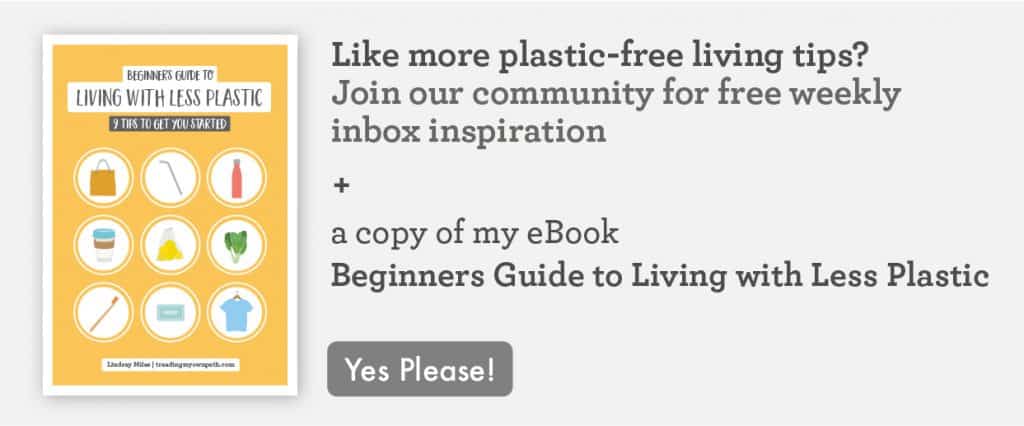

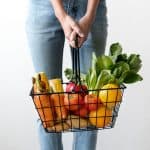
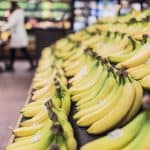

I’ve made the switch..loose leaf tea all the way! But I’m lamenting all of the teabags I have composted. My poor wormies and soil microbes must be smothered in micro-plastics from tea bags.
Yes. That’s irritated me too, before I knew!
It’s frustrating isn’t it, Debbie! When it comes to zero waste and plastic-free, there’s a lot of legacy of “before we knew” stuff to deal with. Gah!
Oh Kerry, I feel bad about that also! But then again, landfill is rubbish (literally, although I wasn’t trying to be funny) too. So for all the terrible microplastics, I’m still think it was better to compost than landfill. Just wished I’d realised about 10 years ago!
Your first blog post on this topic convinced me to switch to loose leaf tea!
Hurrah! No doubt your cups of tea are so much better these days, Kirsty!
I use loose, but still some bags where I can’t get the variety. I’ve petitioned both Pukka and Clipper as I don’t think there should be any plastic in organic tea!
Pukka don’t use plastic in their teabags but the envelopes each teabag come in are made of plastic. Saying that, I think I read that they are looking to switch, so that’s good. I know what you mean about organic tea. Planet Organic have the heat sealed teabags with the plastic component, it seems like a contradiction to me!
It’s crazy..
Wow! I never knew. I too have thought they were compostable. I buy loose, but have bought bagged. Never again. It’s amazing how a whole industry thinks this is okay. When selling only loose tea is much easier. Thanks, Lindsey!
Hi Caroline and sorry to be the bearer of bad news :( Still, if you already buy loose then you are half way there!
When I saw you had an update, I was expecting you to mention the fairly recent news that the Co-op and PG Tips are replacing the polypropylene sealant in their teabags. If you haven’t heard about that, see https://www.theguardian.com/environment/2018/jan/28/teabags-plastic-free-co-op-eco-friendly and https://www.theguardian.com/environment/2018/feb/28/pg-tips-announces-switch-to-plastic-free-fully-biodegradable-teabags
I’m not sure what to make of it. They both claim to be plastic-free, but they don’t say what it’s supposed to be. It sounds like PLA to me. It might just be bad reporting (plenty of that around!), since PG Tips don’t actually claim it will be plastic-free on their website (not sure about the Co-op, couldn’t find anything on their website).
I have a tea steeper, but I find it really annoying and painful to use. It’s hard to hold open (which hurts my hand) and the leaves get stuck in the edges, stopping it from closing properly. I also can’t work out how to clean it easily. Larger leaves stick like film to the inside and smaller bits get stuck in the mesh.
What do you do if you’re making tea for multiple people? A teapot only works if everyone is drinking the same type of tea.
Hi N, actually I was going to mention this news, except when I looked into it I realised it’s a lot more complex (because yes, many of the companies are saying they will change to bioplastics, which are not necessarily compostable or biodegradable). Definitely misleading reporting in some (many) cases). I thought it better to separate this out into another post. Stay tuned!
There’s lots of different types of tea ball / steeper. I have a couple, and I also have a tea strainer. Which means I can do three different varieties at once when I have guests!
Thank you für explaining!
My pleasure Spalouna :)
I’m confused… I send a mail to Or Tea? to ask if they use plastic in their tea bags. Their answer was “no, we are proud to say our tea bags are made of corn starch and unbleached cotton, so no plastic is used!” But corn starch is kinda plant based plastic, right? But is it compostable or not? And therefor good or bad?
Hi Jenny! Yes corn starch is plant-based plastic, it has the same principal properties as plastic and is classified as plastic #7. With all the negative press, companies are keen to distance themselves from “plastic” – but corn starch is still plastic, albiet one made from plants rather than fossil fuels. Personally, I’d track down a paper only brand or switch to loose leaf. Hope that helps!
A lady I came across told me she found a robins’ nest. The robin had been raiding her compost heap for what was left after the tea had disintegrated from within the tea bags, and was using them to make a nice cosy nest lining!
There are more herbal teas to try – sage, dill, meadowsweet flower, raspberry leaf, limeflower, thyme, lemon verbena, bog myrtle and more. You can dry these in shade in an airy place, then put them in containers for winter.
Oh this is so true… I cringe at the thought of ever buying herbal tea! Still, plastic-free and zero waste is a journey and there is always something to learn…
I always forget this, but your graphic really helped get through to me! Thank you!
Ah, my pleasure Celia! I think it sums it up quite well – it is a confusing topic!
Shouldn’t have assumed just because I was buying organic teas that the bag would be earth friendly. Sadly I’ve got dozens of kinds of tea and won’t be able to enjoy them now I know plastic is one of the ingredients. Argh it’s a tough journey !!
It is crazy, Karen! I made all kinds of assumptions at the start. Like organic meant plastic-free, or that “eco friendly” was a meaningful term… Still, we learn and we grow! And whilst tough, it is infinitely rewarding!
My ‘Virgin Garden’ brand organic tea bags from the supermarket claim “unbleached paper tea bags”.
That sounds like you’ve found a good one, Jill! It never hurts to email and double-check, but I think you are onto a keeper!
Hi. I asked the question about the bags I use and this is the response I got….. can you tell me if they are ok? Thanks.
Our pyramid bags are biodegradable and are made of PLA [Polyactic Acid]. This is a derived from food stuffs such as tapioca. The material is sourced from Japan where it was invented in the 1980’s.
Ah Jessica, PLA is the plant-based plastic, categorized as plastic #7. “Biodegradable” as a term is pretty meaningless unless we know “into what” and “over what time frame”. It can be argued that a plastic bottle is biodegradable – it will just take 450 years and leave toxic residue.
Many tea bags use the Japanese certification scheme GreenPla, which specifies that the plastic must be 60% biodegradable to achieve certification. That’s not actually much more than half! They also allow the presence to toxic heavy metals.
Personally, I steer clear of any plant-based teabags. I’d opt for paper only brands where possible (there are a few) or loose leaf tea. Hope that helps!
I don’t understand (doesn’t take much sometimes!) the problem with using cornstarch and the like
It’s complicated, I agree! (I have a degree in Biochemistry so I geek out over all the science, but I get that it isn’t everyone’s “thing”!) In short, being plant-based and made from plant sources (corn, tapioca etc) is no guarantee that it will be biodegradable or compostable. There’s no strict guidelines around terms like “biodegradable” either, so companies slap them on. A product could be biodegradable over 500 years and biodegrade into toxic residue, and it is still technically “biodegradable”. Some products might have certification which tells us the time taken and the residue: as an example, the teabags that use the GreenPla certification scheme can get the certification if they only biodegrade by 60%. That’s not much more than half!
I hope that makes sense :)
In short, if we want natural products that truly return to safe components, we are better off with paper or loose leaf tea than cornstarch teabags.
Thank you for the information. I read your post months ago and have given up the few tea bags I was still using. To clarify, are you saying the plant based bags actually are or become chemically toxic as they decompose? Or just decompose at an unacceptable rate? Is it truly a chemical toxicity issue or a decomposition issue? Thank you.
Being mainly a coffee drinker, and an instant coffee drinker at that, am I safe? or are their things I should look out for?
We switched to loose tea several years ago- didn’t know about the plastic but concerned about the waste as we noticed the bags didn’t compost properly. Now we also buy it in bulk to avoid the packaging. But now I’m beginning to wonder about the coffee filters we use to make filter coffee (after grinding our own beans also purchased loose). We use unbleached Melitta filter papers- do you know if these have plastic? They appear to compost well
Do you know about dilmah? I put them in the compost and worm farm and have never found a trace of them afterwards, and we put a lot in there!
Hi Michelle,
Thank you very much for your email.
You will be happy to know that Dilmah teabags are free from plastic.
The tag, string and teabag are all 100 percent biodegradable.
We hope this information helps!
Kind Regards,
Sonia Konstantinou
Customer Service Support
Dilmah Australia
Units 1&2/ 12 Compark Circuit, Mulgrave, Vic, 3170
Direct: 03 8581 6500 | T: 1800 333 663| F: (03) 8581 6550
customerservice@dilmah.com.au| http://www.dilmah.com.au
http://www.mjffoundation.org | http://www.dilmahconservation.org
Hi there
I’ve been struggling to find a plastic free tea bag for months now so I was over the moon when you had 3 producers who were confirmed as plastic free! I ordered 4 boxes of Clipper tea bags in my excitment but when I got onto their website found that while they’re unbleached they do contain plastic. Copied the below from their FAQ page;
‘Do Clipper tea bags contain plastic?
We are aware that our tea bag paper does unfortunately contain a small proportion of plastic fibres. The paper is food grade and is suitable for its intended purpose meeting all relevant UK and EU Regulations regarding food safety. It is also permitted in Organic certified products. However, we know this is not an ideal situation and we have been working tirelessly together with our packaging providers to find a better alternative. To help minimise our impact on the environment, our aim is to create a tea bag paper made from all plant based materials, not only will it be biodegradable but it will remain unbleached and adhere to our organic principles. The development of this new substrate which is completely GM free and 100% unbleached means it’s taking a little more time to finalise, but this is a key priority for us. We have already completed two production trials and hope to have a plastic-free tea bag in operation by the summer’
https://www.clipper-teas.com/frequently-asked-questions/
Thank you for your comprehensive article! I had already switched to loose leaf tea a few months ago after watching the BBC’s doco. Glad I did – setting an example for my teenage girls. I’ve also recently discovered tea brewed with fresh mint leaves and was blown away with how refreshing it is! :)
Very useful post! Thank you. I mostly buy loose tea but would sometimes buy tea bags, now I know they probably contain plastic, so I’ll stop.
I am extremely shocked and I also feel super stupid and just sad. Thank you for the information though. Ignorance sure is/was bliss but cant be an option. But now what do I do with all the teabags I already have bought? As much as I hate plastic, I also hate waste. But I sure dont want that plastic in my mug of tea. Maybe I can tear open the bag, put that into the proper recycling bin and brew the tea as I would with the usual loose tea. I am not sure that would work as the tea in tea bags is often very fine powder. Any thoughts on that would be highly appreciated!
Kind regards,
Maike
I was really hoping it wasn’t as bad as it apparently is. The last straw for me was a mason jar of Humble Tea. What a good idea I thought, and wanted to support. I was perplexed at the pyramid tea bag and thought that it could not possibly be environmentaly safe. Something so perfect looking – very twee. The jar sits on the counter as an example of the folly of humankind. Thanks for your website. Plastic teabags are an unnecessary and horrifiying convenience. I don’t think I exaggerate.
Here in NZ we’ve been treading the nerowaste path for 18 months. In that time the number of leaf tea makes in the supermarket, that dont use plastic in the packaging, has reduced to one. I’ve become a tea leaf haorder. …buying up when it is available… Worried about what happens when that company updates the factory…
I’m just learning about this and new to composting as well. My mom uses the Louisiana tea bags and I googled them. They said the bags are compostable but the string and staple aren’t. How do you know how long it takes for these items to compost also what happens to the string and staple when I put it in the garbage or should it go in the recycle? Or something else? My parents are southern and drink a lot of sweet tea, so I think the little tea steeper would not wor for them. And suggestions on brewing a large pot of strong tea with out the tea bags or tiny steepers
Yes I heard about plastic being in teabags, so thank you for your blog. I’ve given up teabags and just use looseleaf tea which has more flavour anyway. When I visited a tea factory in Darjeeling a few years ago I learnt that teabags are filled with the dust residue and the better leaves kept for loose tea! I use a tea strainer if just a cup for me or a teapot for more cups. I’m currently analysing the contents of my store cupboard and writing to companies and supermarkets to tell them I won’t be buying their product any more while it is sold in unrecyclable plastic. We have to exert our power as consumers if we want things to change. I’ve just listened to Radio 4’s File on Four shocking report about our contaminated recycling and Indonesia, and how the poorest people in the world are suffering from the effects of our throwaway society.
Hi. Thanks for the very useful research. I started looking for this information when I realised that the funny little bits of papery stuff in two year old compost were our old teabags. Also found a few coffee bag pyramids that could have been refilled and used again – 100% plastic.
Cary
Hi
We made the switch nearly a year ago to loose tea, it tastes so much better. I buy in bulk to reduce on waste. People are shocked when I tell them about the plastics found in tea bags, unfortunately it’s all too convenient for people to continue to use tea bags. Until the industry is forced to make changes, this is sadly the way it is for the foreseeable future.
Ah glad to hear Dilmah is plastic-free.
I’m wondering now if my Madura t-bags are also?
Hi, Thank you for writing this article! I’m a tea drinker since I was five years old. We drank Red Rose loose tea. Mom would brew a pot of tea using a tea ball. The only coffee she and my dad drank was at breakfast. Then came tea bags and it seemed easier. I guess we got to be a bit lazy or manufacturers made it seem more economical to buy tea in bags.
I do have some questions. #1. With plastic in tea bags can our kidneys have a difficult time ridding our bodies of plastic and is it possible for our bodies to become toxic from all this plastic? Especially if a person drinks several cups of tea daily. #2. I cut open the tea bags of a brand new box and emptied the tea into a canaster. Now that the tea is loose and I’ll be using a metal tea ball, is drinking my tea this way healthier for me?
After reading your article I am telling all my family, friends, and everyone I meet to stop using tea bags.
Hi Valerie, I’m no expert in the health issues, but there is more research coming out all the time about the health implications of plastic. For me, when there’s such an easy, simple alternative, I’d just rather not run the risk. Regarding cutting tea bags open, the tea used in tea bags is the lowest grade of tea (known as ‘dust’) so it would be better to actually buy tea that is meant to be loose leaf. It will taste superior, I promise!
What about the t-sac filters that are sold to use with loose leaf tea? No one seems to be talking about these bags.
Hi Brenda, I’ve never heard of these. What are they and do you expect people to be talking about them because they are good, or because they are bad?!
Cuppa… What an ugly word. It ruined the artucke
Nice article but mint, of course, isn’t actually a tea leaf, though we often drink mint tea.
Excellent article. Given you are in biochemistry, have any idea of whether 100% PLA-based tea bags have potential risks to human health? I’ve read a lot on the biodegradable issue, but haven’t been able to find much research on whether PlA tea bag microplasitcs and leeching pose threats to human health.
Thanks!
What about fill-your-own “t-sac” made in Germany. Do those contain plastic?
Kat Newcomer
Lindsay what about Using PtE free food grade nylon used in organic revolution tea bags. I called them and they said the melting point is 490 degrees so it doesn’t melt in boiling temperature (I prepare the tea at 179 degrees)
and is not harmful.
For years I have attended church groups which traditionally end with a bikkie & cuppa. Obviously loose tea is preferable but not sure how you would make large quantities…
Now I am using loose tea, now I’m using up the existing tea bags I have. I cut the bags and empty it into a tea strainer very cheap from Wilko or Morrison’s. I watched a documentary on BBC I think it was David Attenborough. I had not even realised there could be plastic in tea bags. I was horrified to see and hear that a rare type of whale was becoming extinct because the plastic in their bodies was making them infertile.How much plastic are we consuming? I am saddened to hear many women are finding it difficult to conceive . Is there a link? I was down on my local beach and horrified to see soooo many minuscule prices of plastic in the seaweed. I live on the east coast and that is the North Sea. I’m so sad that we humans are so selfish and lazy, attention to being tidy with our own personal waste seems to not be an option for so many people. the easiest thing to help the environment! Electric cars will be so expensive and I guess will help but that’s another 10 years, but our Seas are the most important priority and we can start now today!! .
What about non woven material tea bags? Do they also contain micro plastic?
I would like to know if the African tea ROOIBOS sachets contain plastic…The bags are
organic and off-white in colour